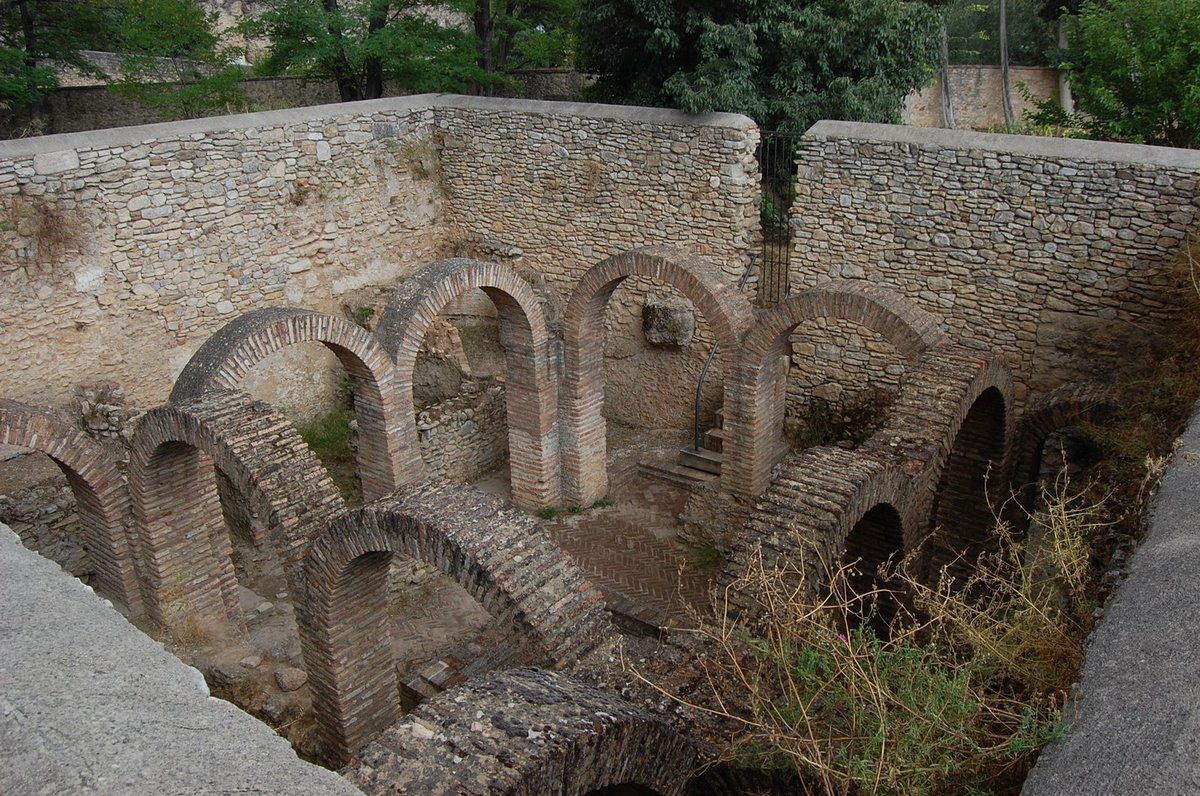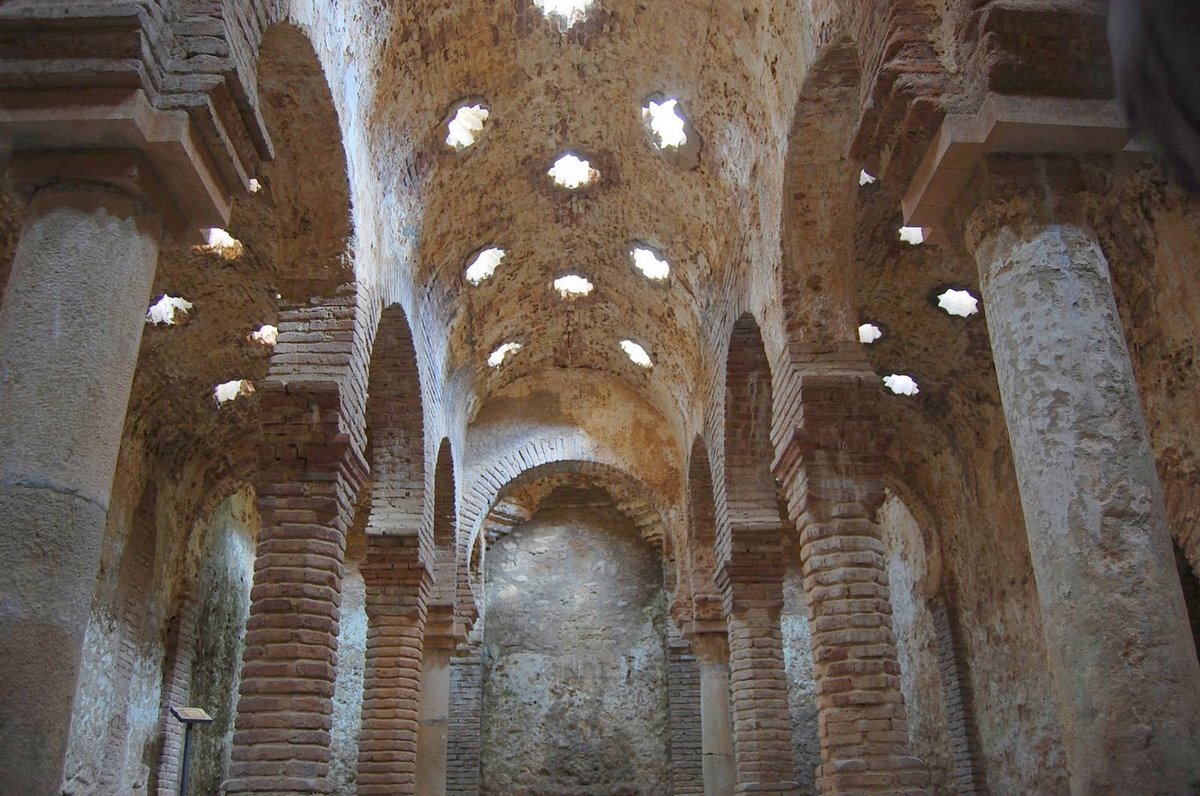The Northeastern edge of Rhonda's old city contains the
best-conserved Arab baths in all Iberia. These were built
outside of the Arab walls so as to be near the Arroyo de
las Culebras (translation: Snakes' Stream!) A water wheel
and a small aqueduct moved stream waters into the
heaters.

In the above picture at left is the equivalent of our
locker rooms. To its right are the arched roofs with
numerous ceiling windows now sheltered with hokey
Plexiglas deflectors. The three vaults here shelter the
layout of chambers the Romans defined: cold, warm, and
hot. The Moors built these in the 13th or 14th centuries
and their hydraulic system has pretty much survived
intact. The stubby "tower" at center rear holds the
waterwheel.

A masonry wall protects the complex. These Moorish
arches are about all that is left of the changing area
which would also be the site of negotiations and a bit of
commerce as well.

Above is one of the three interior chambers where
ceiling lunettes waft light into the triple vault. Unlike
the Romans, the Moors did not immerse themselves in
pools. Instead, they would scoop heated water and pour it
onto their bodies (or, of course, let the servants and
slaves do all of that.) If good help was hard to get,
they could simply rely on rising steam.

Ronda provides its visitors with a computer graphic 3D
movie explaining how all this works. After the
Reconquista, Christians (who believed that disease was
caused by sin rather than spread through poor sanitation)
had no use for public baths and
Next we look at several of the civic buildings in Ronda.
Please join us
by
clicking here.
Please join us in the following slide show to
give Ronda the viewing it deserves by clicking here.
|
|





